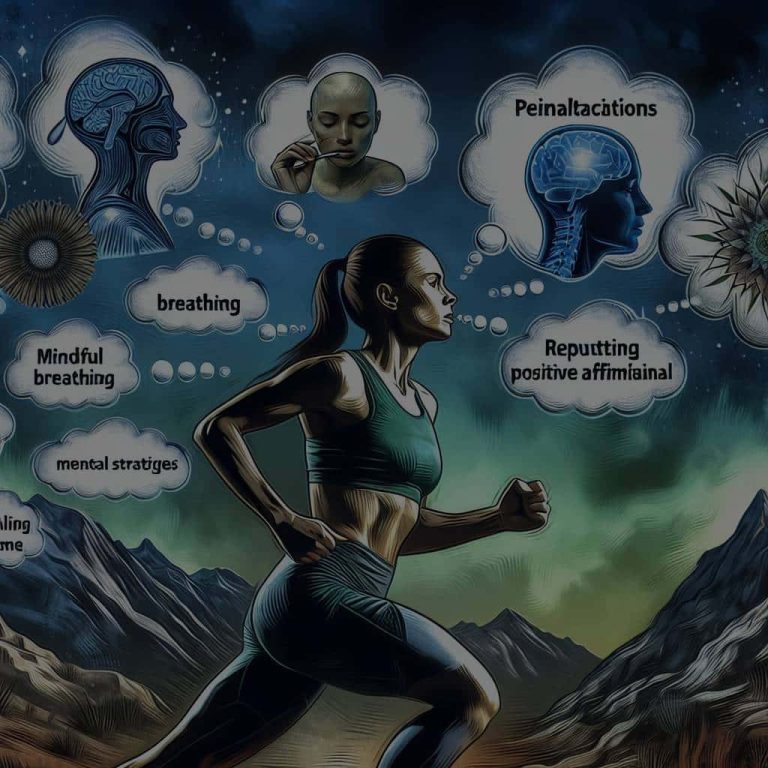Staying Motivated for Long-Distance Events in Cycling
Staying motivated for long-distance events is crucial for cyclists aiming to push their limits and achieve new milestones. Motivation fuels the journey from preparation to crossing the finish line. Within the Cycling Community, an understanding of how to sustain this motivation can make all the difference in performance. By tying together elements like Training Routines and mental resilience, cyclists can optimize their preparations.
Cycling performance metrics and bike maintenance tips play their parts, providing structure and reliability. With focus and perseverance, cyclists can combine intrinsic and extrinsic motivation, ensuring they stay the course even when challenges arise.
Goal Setting and Performance Goals
Setting performance goals is foundational for any long-distance cyclist. Begin by defining clear, achievable objectives tailored to your abilities and aspirations. Competent goal setting lays the groundwork for motivation, enabling cyclists to evaluate progress methodically. Identify specific milestones, such as covering a certain distance or maintaining a target pace, to boost intrinsic motivation.
Incorporating cycling performance metrics can help measure progress objectively. Use data from your cycling computer or smartwatch to track essential statistics. Monitoring these metrics ensures you know precisely where you stand and where improvement is needed.
Training Techniques for Cyclists
A well-structured training routine is vital for building the endurance needed for long-distance events. Focusing on cycling cadence and performance metrics, cyclists can enhance their training efficiency. Power-based training, where cyclists measure the power output in watts, provides a robust framework for improvements.

Interval training for cycling adds variety and intensity, pushing physical limits and enhancing stamina. These techniques require self-discipline, with each session bringing you one pedal stroke closer to your goals. Visualization techniques can enhance your mental resilience, picturing success during challenging parts of training.
Embracing a Positive Mindset and Mental Resilience
A positive mindset takes you far when faced with daunting events. Mental resilience is strengthened through self-talk, where positive affirmations bolster your confidence. During tough rides, recite motivational quotes or create your own to stay focused.
Positive self-dialogue can drown out doubt, emphasizing perseverance and determination. Remember, setbacks in training are part of the journey. Cultivating mental toughness lets cyclists face obstacles head-on, maintaining intrinsic motivation and ensuring each ride edges you closer to envisioned dreams.
Energy Management and Nutritional Optimization
Energy management is crucial for enduring long rides. Begin by focusing on optimal nutrition, selecting foods that fuel extended performance without causing burnout. Incorporating carbohydrates, proteins, and healthy fats provides a balanced approach.
Hydration remains a key element, with electrolytes playing a substantial role in maintaining stamina throughout a cycling event. Tracking nutritional intake helps in understanding how your body responds, ensuring you’re fueled appropriately for each training ride and race event.
Rest and Recovery
Cycling performance relies not only on intense training but also on adequate rest and recovery. This time allows muscles to repair, preventing fatigue and injuries. Furthermore, structured rest aids in stress management, providing a mental break from the rigors of training.
During recovery periods, consider practices like stretching, foam rolling, or yoga to maintain flexibility and reduce tension. As your training progresses, these activities will aid in maintaining peak physical and mental condition.
Intrinsic and Extrinsic Motivation
Understanding the sources of your motivation aids in fortifying long-term commitment. Intrinsic motivation involves personal growth and enjoyment—it’s what drives you to ride beyond the finish line, not just to it. Extrinsic motivation includes rewards or recognition from others and can buoy spirits during demanding times.
Balance these motivators using a detailed training routine. List personal reasons for participating in long-distance events alongside external incentives. This can prevent burnout and keep motivation levels high throughout your cycling journey.
Accountability Partners and Emotional Support
Cycling often involves solitary training sessions, but accountability partners can add an essential support layer. Partners share feedback, encouragement, and camaraderie, ensuring commitments to goals are taken seriously.
In addition to training partners, emotional support from friends or family bolsters mental resilience. These interactions fuel intrinsic motivation, providing a network to lean on when challenges arise.
Cycling Gear and Safety Tips
Selecting the right cycling gear boosts motivation by enhancing comfort and safety, vital for long-distance events. Opt for ergonomic choices in apparel and equipment. Cyclists should prioritize helmets and padded shorts, reducing distractions caused by discomfort.
Safety is paramount; therefore, integrate cycling safety tips into your routine. Ensure bike maintenance is regular to prevent untimely mechanical issues, paying due attention to tire pressure, chain lubrication, and brake functionality.

Focus, Time Management, and Stress Management
Time management is at the core of seamless cycling preparation. Develop a schedule that comfortably fits training into daily life. For effective stress management, employ techniques like mindfulness and meditation, which mitigate anxiety around time constraints.
Maintaining focus involves setting performance goals and celebrating milestone achievements. This keeps you driven and lessens the psychological impact of grueling training demands. Progress tracking ensures achievements are acknowledged, fortifying motivation.
Visualization Techniques and Self-Discipline
Visualization techniques equip cyclists to mentally rehearse entire events, preparing them for varied scenarios. This method involves creating vivid mental images, including overcoming obstacles and visualizing success.
Visualization is a powerful tool in building self-discipline. With regular practice before and during training, cyclists develop a resilient mindset crucial for perseverance.
Using Motivation-Enhancing Tools
Cyclists often rely on tools like power meters and heart rate monitors to track efforts and improvements scientifically. With technology and metrics like VO2 max improvements, cyclists can set tangible performance goals.
Progress tracking using sophisticated cycling apps and devices ensures insightful feedback is available. These tools help with maintaining a routine, monitoring strides in energy management, duration, and cadence improvements.
Race Preparation and Final Countdown
Race preparation involves final tuning of all components, from bike adjustments to mental readiness. Ensure all equipment is primed and follow a plan specific to the event conditions.
Days pre-event, adjust routines to allow rest and mental clarity. Use visualization to envision race day moments, mitigating nerves and enhancing focus.
FAQ Section
1. How can I maintain motivation over long training periods?
Set small, achievable goals, and celebrate minor victories. Include activities you enjoy to keep training engaging.
2. What role does nutrition play in Long-Distance Cycling preparation?
Nutrition provides energy and aids in recovery, helping sustain performance and health during rigorous training.
3. Is it better to train alone or with a partner for long events?
While solo training allows focused efforts, training with a partner offers accountability and shared motivation.
4. How do I balance intrinsic and extrinsic motivation?
List personal motivations alongside external incentives, ensuring a comprehensive approach that maintains enthusiasm.
5. What are effective visualization techniques for cyclists?
Imagine riding complex routes, overcoming challenges, and crossing finish lines, fostering mental fortitude.
Conclusion
Staying motivated for long-distance cycling events involves a synergy of mental resilience, structured training, and comprehensive preparation. Balancing motivation sources and employing visualization techniques empowers cyclists with perseverance. By celebrating milestones while emphasizing power-based training and cycling safety, riders enhance their readiness and performance. Encourage engagement through comments and feedback, fostering a community rooted in mutual support and shared experiences.






